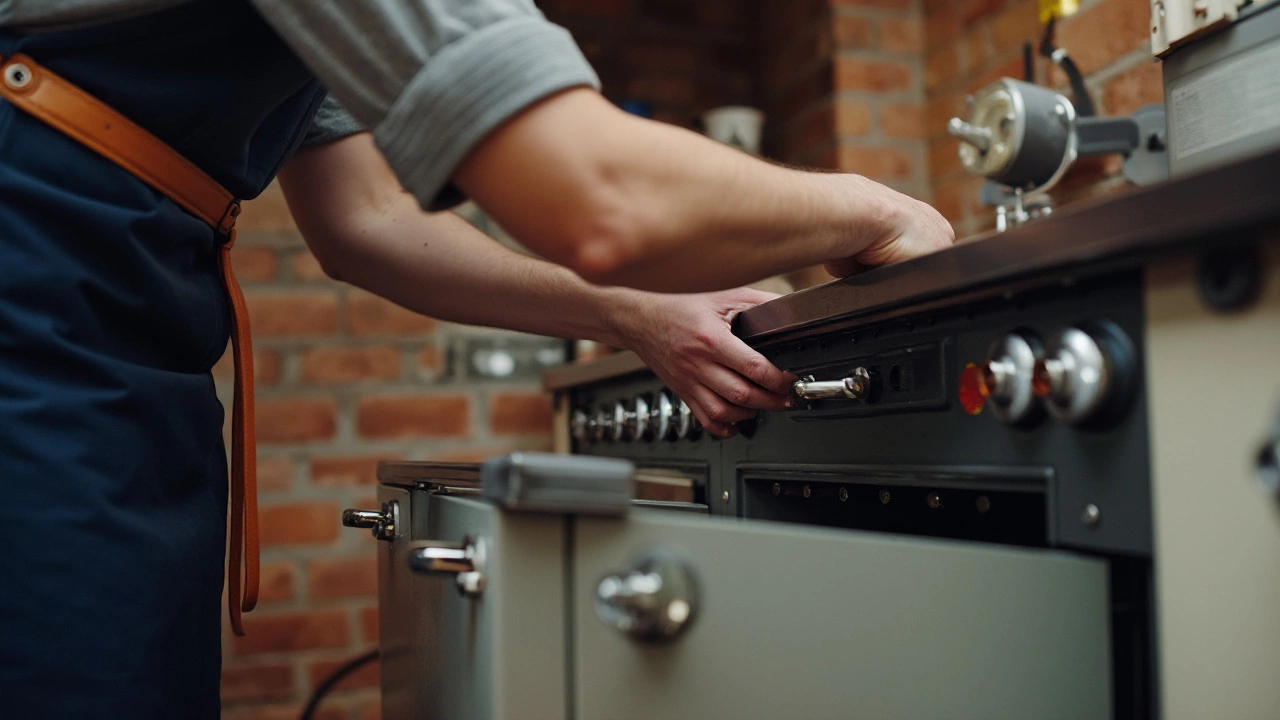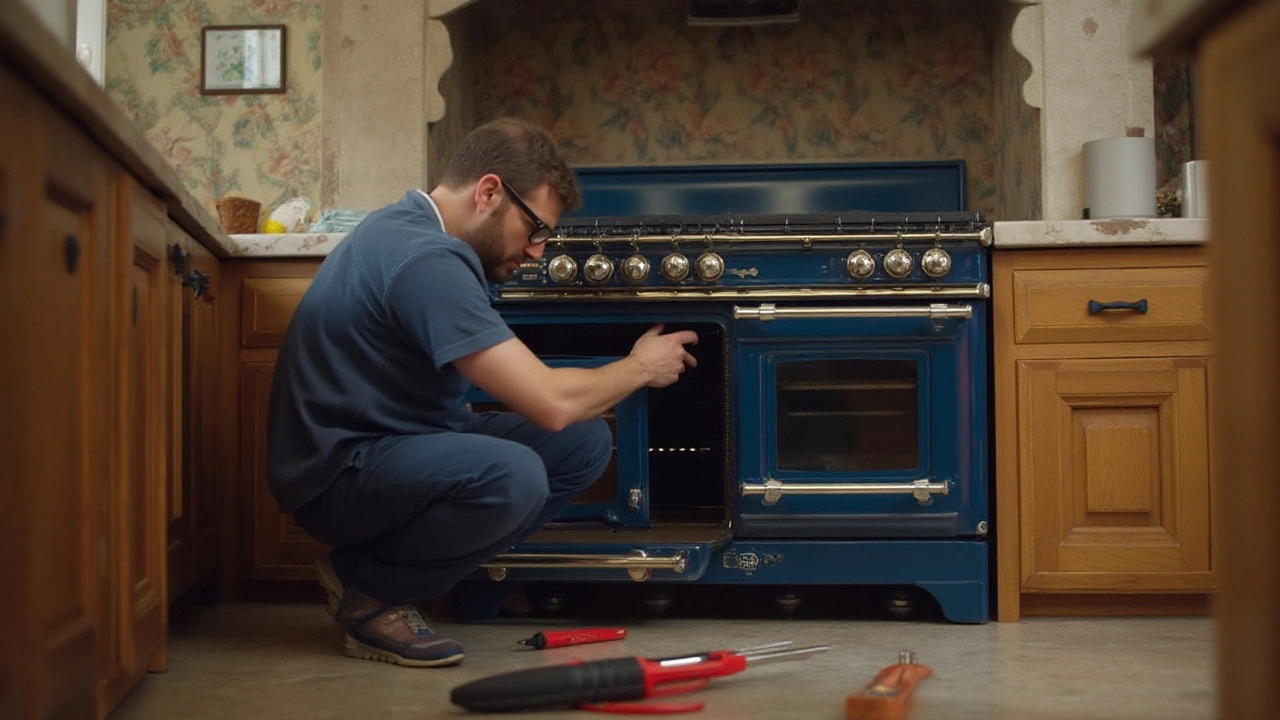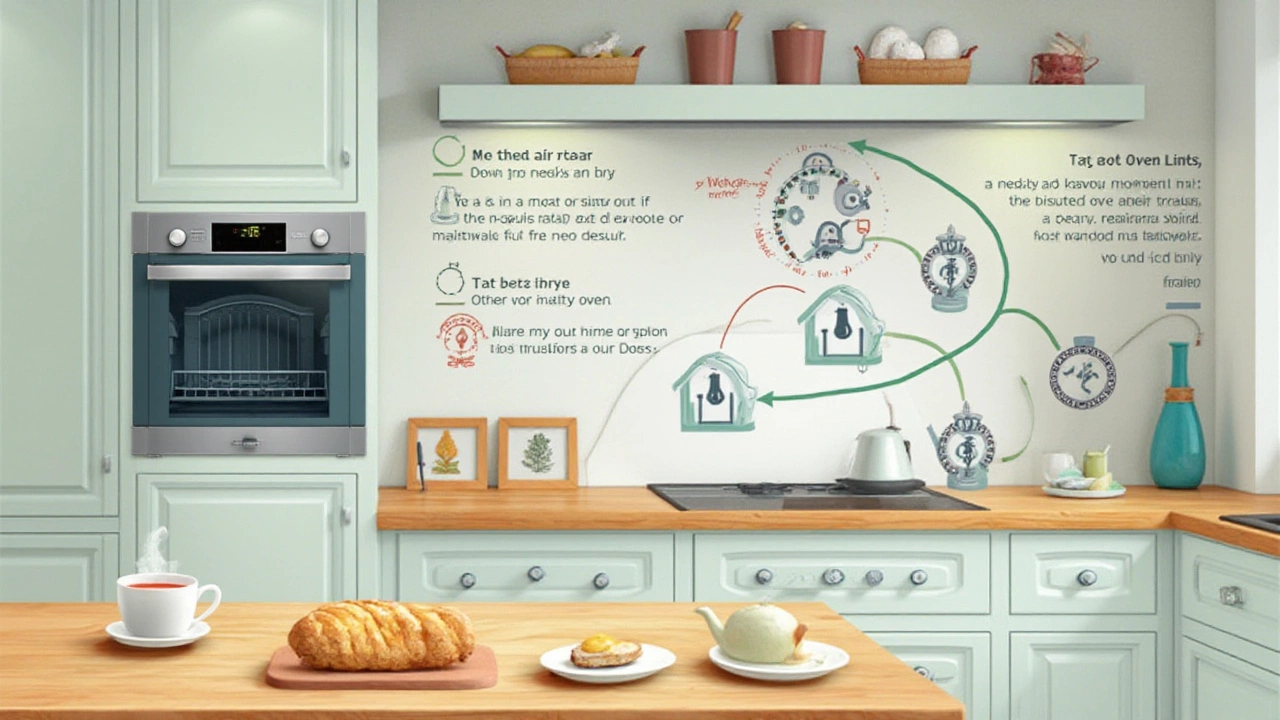Should You Repair or Replace Your Oven's Heating Element?
 Oct, 17 2024
Oct, 17 2024
When your beloved oven starts acting up, and the cakes are coming out unevenly baked, it might be time to question if the heating element needs replacing. This component is at the heart of your oven's baking prowess, ensuring consistent temperature distribution for perfect culinary creations.
But how do you know when a replacement is truly necessary? Many factors play into this decision, from cost to potential DIY fixes, and understanding the tell-tale signs of a failing heating element can prevent a lot of kitchen hassle.
This article delves into the intricacies of your oven's heating element, offering insights into common issues and practical guidance on whether it's worth repairing. We aim to equip you with the knowledge to tackle this kitchen conundrum head-on, so you can make an informed choice for your household's cooking needs.
- Understanding Heating Element Functionality
- Common Signs of a Faulty Heating Element
- The Cost and Benefits of Replacement
- DIY Tips and Considerations
Understanding Heating Element Functionality
The heating element in your oven is much like a magician behind a curtain. It quietly performs its duty, turning electrical energy into the heat that's essential for baking and roasting. At its core, the heating element is a piece of wire or coil that resists electricity, and in resisting, it generates heat. This heat then cooks your food evenly, ensuring that everything from casseroles to cakes is done to perfection.
When the oven is turned on, electricity flows through the heating element, causing it to heat up. This heat radiates into the oven’s interior, raising the temperature to the desired level. The thermostat plays a pivotal role here, regulating the current to maintain consistent heat levels. It's a fine dance between electricity, resistance, and control to ensure your favorite dish turns out just right every time. Without a properly functioning heating element, disasters such as uneven baking or raw centers can become a frustrating kitchen reality.
Ovens typically have two heating elements, one at the top and another at the bottom. The bottom element is usually used for baking, whereas the top is used for broiling. They're designed to last for several years, yet like all good things, they can wear out. This wear and tear are often because of repeated exposure to high heat, which can eventually break the resistance wire inside. Knowing how these elements function helps in diagnosing and fixing problems more effectively.
"The key to a perfectly baked dish lies in understanding your oven's heating dynamics," says Julia Child. Just like a chef needs to know their tools, a home cook should be a student of their kitchen appliances.
For those interested in some hard numbers, most oven heating elements operate between 200-300 volts and generally have a power range from about 1,000 to 3,000 watts. This information can be useful if you're uriously comparing models or trying to estimate energy consumption. In terms of cost, replacements vary widely depending on the type and make of the oven, making it worthwhile to understand what you're dealing with before embarking on a repair.
Given their essential role, a faulty heating element can truly derail your cooking plans. Recognizing the signs of an issue—like uneven heating or no heat at all—is half the battle. Armed with this understanding of what makes the heating element tick, you're better equipped to troubleshoot when issues arise. Whether you plan to call in a professional or try a DIY approach, knowing these basics can save time and potential grief, ensuring your oven serves you well for years to come.

Common Signs of a Faulty Heating Element
Imagine pulling out a tray of cookies from your oven, only to find them half-baked or charred beyond recognition. It’s a frustrating scene that could very well point to a faulty heating element. One of the first signs many home cooks notice is uneven cooking, where food isn't cooking properly or not reaching the desired temperatures. If you've adjusted time and settings but your meals still miss the mark, it's worth investigating the integrity of your oven's heating component. Ovens typically have two heating elements—one at the top and one at the bottom—and a dysfunction in either can dramatically impact your cooking outcomes.
Another giveaway of a failing heating element is a strange smell. As elements wear down or break, they can emit burnt odors, sometimes accompanied by visible smoke. This scenario often occurs if food residue is left on the element, burning as the malfunction progresses. Scorch marks inside the oven can also indicate where excessive heat has impacted the oven walls, suggesting potential issues with heating regulation. It's essential to inspect for these signs, especially after experiencing cooking anomalies.
Additionally, if you hear odd noises coming from within your oven, such as popping or sizzling sounds, these can be signs of electrical problems related to the heating element. Elements that break might physically detach partially, and when electricity flows through a faulty one, these sounds often result. Regular inspection can prevent these disturbances from causing more severe damage over time. Besides, a visible break in the element often manifests as a bright spot or visible piece during operation, indicating where the circuit has been disrupted.
According to the Home Appliance Manufacturers Association, "Regular maintenance and early identification of issues can significantly extend the lifespan of household appliances." This highlights the importance of timely intervention in appliance care.
It's also important to take note of inconsistent preheating. If your oven takes too long to preheat compared to its past performance, or it never reaches the intended temperature, these are clear indicators that the heating element may not be functioning fully. Measurements using an oven thermometer can confirm these suspicions by checking actual temperatures against your setting. If there is a substantial difference, this is an obvious signal of a problem too significant to ignore.
So, before considering a full appliance replacement, evaluate these signs to determine if the oven repair path, focusing on the heating element, might be the more economical and effective solution. With a vigilant eye for detail, you can potentially save significant costs and extend your oven's operational life considerably.

The Cost and Benefits of Replacement
The decision to replace the heating element in your oven doesn't come lightly. It's a choice often driven by necessity and a balance between cost and practicality. The first step is to assess the estimated cost. A new heating element typically ranges from $20 to $100, depending on the brand and model of your electric oven. Including a professional's service fee could bump this figure up by another $100 to $200, depending on location and complexity of the installation. For some, this cost may be justified when considering the price of a new oven, which can easily run into hundreds or even thousands of dollars.
Choosing replacement doesn't only hinge on cost, though. One must consider the age of the appliance. If your oven is fairly new, say under five years, investing in a new heating element might extend its lifespan significantly. Whereas older models, especially over a decade, might not benefit much from this fix in the long run. Nobody wants to patch up an oven that's bound to falter again soon. Yet, by deciding on a replacement, you're leaning into the promise of restored efficiency and reliability, often breathing new life into your trusty kitchen companion.
Interestingly, models from the last decade come with enhanced features, like improved safety measures and energy efficiency, which inadvertently offer subtle incentives to stick with repairs. For many homeowners, this addition to the decision-making pool might just tip the scales toward replacement. According to a 2022 study, replacing a heating element can improve energy efficiency by up to 20% in some models, making it an attractive option for those watching their utility bills. Such savings, over time, can offset the initial repair costs.
This balance is seen even in professional opinions. One appliance repair expert notes, "An overlooked benefit of replacing your oven's heating component is the noticeable difference in cooking performance. It's like swapping out old, dull tools for sharper ones."
The choice isn't only about numbers or lifespan; it's a question of peace of mind and future-proofing your milestones in the kitchen. The gratification of salvaging a major appliance anchors this decision for many, while others lean toward the necessity of staying current, finding joy in parts that deliver reliable, even baking. Ultimately, the sweet symphony of functionality meeting financial sense provides compelling motivation for many.

DIY Tips and Considerations
Embarking on a DIY project to replace your oven's heating element can seem daunting, but with the right guidance and a touch of patience, it can be a rewarding task. First and foremost, safety should always be your top priority. Always unplug the oven from the electrical outlet before starting any repair work to avoid any risk of electric shock. When you're ready to begin, have a proper set of tools on hand, including a screwdriver set, work gloves, and a multimeter for testing the electrical continuity of the element.
Start by removing the back panel of your oven to gain access to the heating element. Take a moment to observe how the element is connected. Typically, the element has a couple of screw connectors that need to be loosened, and sometimes it involves removing a few wires. Carefully document or take photos of the wiring setup before disassembly, so there’s no confusion during reassembly. Making sure everything goes back where it should is crucial to the project's success.
Once you have safely removed the faulty heating element, it's time for some testing. Use a multimeter to check if the element has continuity. Place the multimeter probes on each terminal of the element and check for a reading close to zero ohms, which indicates good continuity. If your reading differs substantially, replacing the element is indeed the right decision. A tip to avoid common installation problems is to ensure your new heating element is compatible with your oven model before purchasing.
As you install the new element, go step-by-step, following the reverse of your disassembly notes. Secure it firmly with screws, reconnect the wires precisely, and ensure there are no loose or hanging wires, which can cause operational issues. Once assembled, place the back panel securely, and plug in your oven to test. It's a moment of truth as you check its operational efficiency. An additional tip from experts at the Home Appliance Journal notes, "It's always handy to run a calibration check post-repair to verify temperature accuracy."
"A successful DIY oven repair depends on a customer's confidence and attention to detail," advises the Home Appliance Journal. "Taking the time to understand the steps and ensuring each is followed correctly can make all the difference in a DIY project."
If you have followed all the steps with confidence and things still seem not to work as expected, it may be time to consult a professional. Nevertheless, the process of attempting a DIY repair provides valuable learning moments, ensuring you're more prepared the next time. Remember, patience and precision can lead to a cost-effective solution, leaving your oven running smoothly and ready to tackle those holiday dinners and weekend baking projects.
